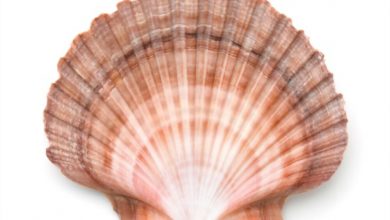Painting a sunset sky with watercolors

Painting a sunset sky with watercolors. In this article, we will complete the table we started in the last lesson, where the theme was “Painting a sunset sky with watercolors.” In today’s lesson, we will paint the sea at sunset and finally complete our first table. I remind you that this article is also part of our cycle of readings entirely dedicated to the watercolor technique!
NEEDED
- Sheet of Canson watercolor paper, A4, 300g fine grain
- 2B graphite pencil
- Da Vinci 5580 brush size 12 round
- Watercolors
- 2 water containers
- Tissue
- Ceramic palette
And we also remind you of the objectives of this lesson:
- Paint the sky with successive layers of color
- Use wet-on-wet and wet-on-dry technique
- Create transparent blends
- Apply wet-on-dry details
- Mix the colors
Step 1: The pencil drawing
Let’s start immediately by simply outlining some freehand pencil strokes that will serve as a guide to achieving the sun’s reflection on the sea. Starting from the horizon line, in correspondence with your sun, draw two irregular lines on the sheet not very far apart. For the amplitude, it will be sufficient not to exceed the circumference of the sun by much. In the vertical direction in such a way as to define the amplitude of the reflection. Then, alternate the drawing with horizontal strokes and continue drawing two wavy and irregular lines in the vertical direction to the base of the paper and lotus drawing.
Step 2: The reflection of the sun
Now that the design is ready prepare a mixture of Lemon Yellow and Cadmium Yellow diluted with water. With the brush, begin to paint the inside of the method by slightly blending the color, helping you with the tip in the narrowest strokes. In this very first step, we proceed with the wet stain on dry paper. At this point, continue to paint the entire area of the reflection with Yellow, softening the color slightly. If the color is excessively diluted, use a cotton cloth or a paper towel to dab the areas you think are most loaded with water.
Step 3: Let’s start with the sea
Now let’s paint the sea base with Cerulean Blue, the same color we used for the bottom of the sky. Dilute some color with water on a unique ceramic palette (if you already have one, alternatively, you can use a plastic container) and apply a layer of light and shaded color with the brush. It is advisable to keep the trend of the brush strokes horizontally. With this step, we will therefore go to create the base of the sea.
Step 4: We add color to the seawater
Once the base has been prepared, prepare a mixture with the Lemon Yellow and Ultramarine Blue, obtaining a seawater green diluted with water. Apply the color with light glazes on the still damp base. It will make the second color bond with the first, naturally creating different shades between the two colors. It is advisable to spread the color horizontally to overlap irregular color strips, making the wavy effect of the water reflection—the successive layers of the sea. Also, pay more attention to paint between the thoughts to define the contours better.
Step 5: Let’s give more depth with some blue
Now we use the Cerulean Blue again, but this time the color we need will have to be more intense than the base we painted previously. Draw light and irregular horizontal stripes are working at the tip, which will make a very realistic effect, not far from each other to let you see the lighter base between the intervals, creating a natural texture on the sea’s surface. Blend where possible with more delicate strokes to make the effect of reflections on the water. Continue to the bottom edge of the design, darkening and widening the stripes as you approach the foreground. Let it dry.
Step 6: We work on the ripples of the water
Now prepare blends of Blu Oltremare and Verde Veronese mixed with Blue on a unique palette with several compartments. Now on the previously dry base, with Green paint, some horizontal and slightly wavy strokes with a more intense color that will stand out against the background in a fluid and continuous way. In this step, work with the tip of the brush! Once dried with the deepest Blue defines darker, more comprehensive shadows and ripples as they approach the foreground to give depth.
Always paint a solid color stripe below the horizon with Ultramarine Blue. As with the sky, you can freely paint the succession of waves. The ideal is to create a final effect that is as realistic as possible. Define the entire surface and the strokes in Blue that you want to be darker and create different color contrasts. Always follow a horizontal course, just like the natural movement of the sea waves.
Also Read: Easy drawing






